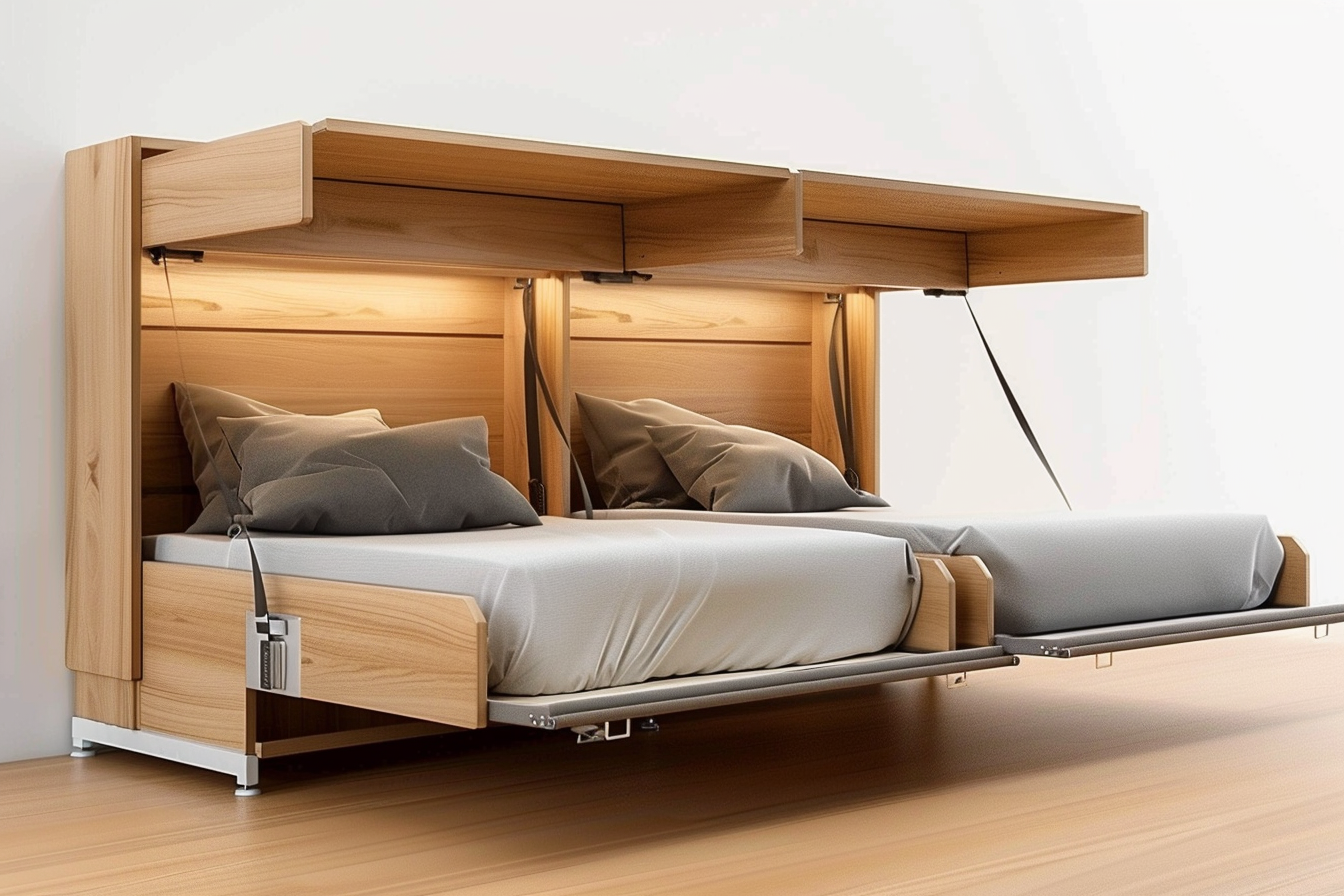Maximizing storage in compact sleeping quarters: practical strategies
Compact sleeping quarters demand careful planning to combine comfort and functionality. Practical storage strategies can free floor space, improve sleep quality, and make daily routines smoother while respecting ventilation, lighting, and ergonomics.

Compact sleeping quarters require a balance between restful design and efficient storage. Thoughtful planning around layout and organization can reduce clutter without compromising sleep quality. By integrating storage into furniture, prioritizing multifunctional pieces, and paying attention to mattress placement, lighting, ventilation, insulation, and acoustics, small rooms can feel both roomy and restful. This article outlines practical strategies that consider ergonomics, textiles, and circadian-friendly lighting to help you make the most of limited square footage.
How can storage be integrated into layout and organization?
Efficient layout is the foundation for maximizing storage. Start by mapping usable vertical and under-bed space, then assign zones for clothing, bedding, and daily items. Use slim wardrobes, wall-mounted rails, and modular shelving to keep the floor clear. Organize items by frequency of use—everyday items within easy reach, seasonal or rarely used belongings higher up or in less accessible bins. Clear sightlines and labeled containers help maintain order. Thoughtful placement of storage elements also improves circulation and makes the room feel less cramped.
What mattress and sleep considerations support storage and sleep quality?
Choose a mattress and bed base that support storage goals without harming sleep. Platform beds with built-in drawers or lift-up bases maximize under-bed volume while keeping a firm, supportive mattress on top. Ensure mattress placement allows for airflow and access to drawers or lift mechanisms. Keep pillows and extra linens in nearby compartments to avoid daily clutter. Maintain ergonomic standards: mattress height should allow easy sitting and standing, and bed position should avoid blocking ventilation or natural light paths that support circadian rhythms.
How do lighting, ventilation, and circadian factors affect design?
Lighting and ventilation influence both functionality and sleep health. Incorporate layered lighting—task, ambient, and accent—to make stored items easier to find and to preserve a calming nighttime environment. Use warm, dimmable lighting in the evening to support circadian cues, and brighter cool-toned task lighting for daytime activities. Good ventilation prevents dampness in stored textiles and mattresses; position vents or allow airflow under furniture when possible. Avoid placing storage that obstructs windows or air returns, and consider breathable storage materials for long-term linen storage.
What role do color, textiles, insulation, and acoustics play?
Material choices impact perceived space and sleep comfort. Lighter wall colors and reflective surfaces make compact rooms feel larger, but balance this with cozy textiles to avoid a sterile feel. Use noise-absorbing fabrics, rugs, and curtains to improve acoustics; insulated storage boxes can also dampen sound. Select breathable textiles for bedding and storage covers to prevent moisture buildup. Insulation around exterior walls can stabilize temperature, reducing the need for bulky bedding and thus freeing storage space for other items.
How can ergonomics and organization improve daily use?
Organizational systems should match how you move and use the room. Place frequently accessed items at comfortable heights to reduce bending or reaching. Incorporate hooks, slim bedside shelves, and bedside caddies for essentials like phones and glasses. Drawer dividers and modular containers keep small items visible and prevent overflow. Ergonomic furniture—such as desks that double as storage or nightstands with adjustable heights—can adapt to different activities and body postures, improving comfort while maintaining order.
Which multifunctional furniture and storage solutions are most practical?
Multifunctional pieces are central to compact rooms. Consider sofa beds, lofted sleeping platforms with workspace underneath, or bedframes with integrated shelving. Floating shelves and recessed niches use wall depth without consuming floor area. Use clear or labeled bins to keep visual clutter minimal. For textiles and pillows, rolling or vacuum-sealing seasonal items saves space, but ensure stored fabrics remain dry and aired periodically. Prioritizing items by necessity and choosing versatile pieces helps sustain a tidy, adaptable room.
Conclusion Maximizing storage in small sleeping quarters is a matter of combining practical furniture choices, smart organization, and environmental considerations that support sleep. By integrating storage into the layout, selecting appropriate mattress and bed solutions, and paying attention to lighting, ventilation, acoustics, and textiles, a compact room can meet storage needs while remaining comfortable and conducive to restful sleep.





